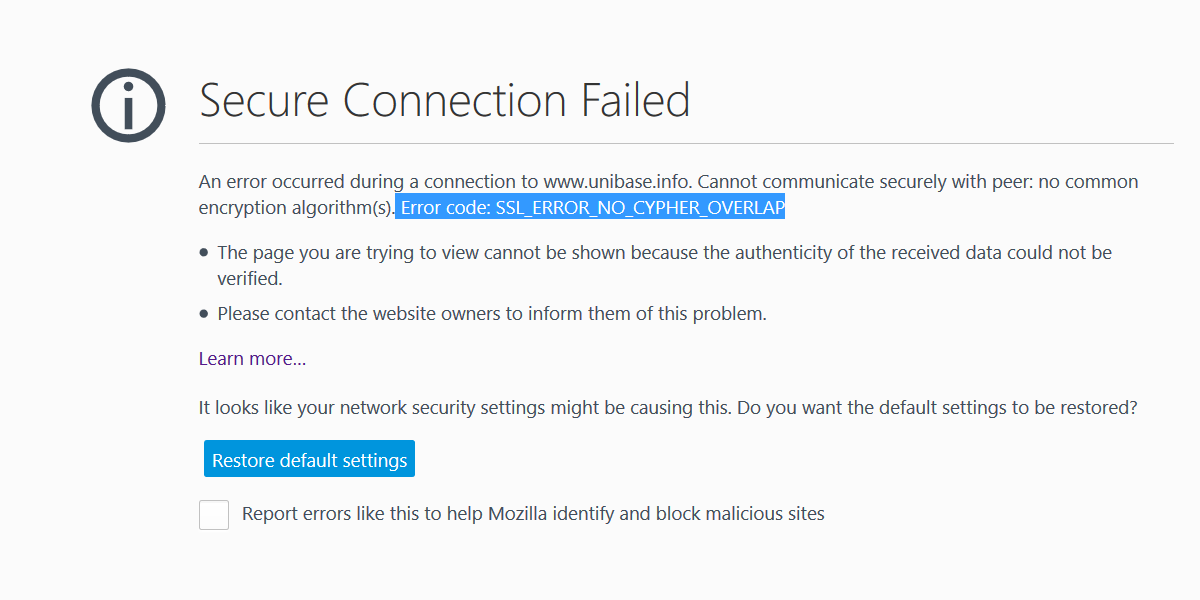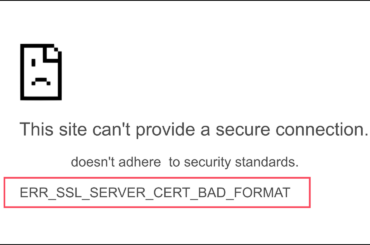Firefox is a good alternative to Google Chrome and it comes with a lot of features. When you encounter problems with Chrome, you can always switch to Firefox. One of the most common problems you might run into while using the Mozilla Firefox browser is the SSL_ERROR_NO_CYPHER_OVERLAP error. This browser-related issue can be frustrating as you may not know the reason for the error. In most cases, when you come across this error, you need to understand that this error involves problems with your browser’s SSL protection.
Reasons for Error Code ‘SSL_ERROR_NO_CYPHER_OVERLAP’?
The SSL_ERROR_NO_CYPHER_OVERLAP error is specific to Mozilla Firefox. In general, this error occurs when the browser is unable to obtain the required security data from the website you are trying to access. As a result of that, the website will fail to load and you will see the SSL_ERROR_NO_CYPHER_OVERLAP error. If you are using an outdated version of the Mozilla Firefox browser, it can cause problems and result in this error. Disabled SSL3 or TLS on the web browser could also be a reason for this error.
Ways to Fix The “SSL_ERROR_NO_CYPHER_OVERLAP” Error
There are generally three ways to fix the “SSL_ERROR_NO_CYPHER_OVERLAP” error.
Update Firefox to the Latest Version
Be it Firefox or Chrome; all major browsers often receive updates. From time to time, browsers are updated with new features and security protocols to offer users a safer browsing experience.
If you run into the “SSL_ERROR_NO_CYPHER_OVERLAP” error, the first thing you will need to do is to check for browser updates.
If you are using SP2 or SP3 Firefox versions, make sure you download the latest version of Firefox by visiting the official Firefox website. Make it a practice to check for updates regularly.
To update Firefox, click on the three-bar menu icon on your browser and go to Help > About FIrefox.
When you click on About, Firefox will begin downloading new updates automatically, if any. Click on “Restart to Update Firefox” after the download completes.
To download the newest version of Firefox from its official website, start by uninstalling the older version of the browser you are currently using. Press Windows+R and type “appwiz.cpl” in the search box and hit the Enter key. In the program manager, right-click on Firefox and click on Uninstall. You can now download the latest version from the official Firefox website and restart your computer to start using the updated version of the browser.
Check SSL and TLS Encryption Protocols
SSL3 and TLS1 protocols could also be a reason for this error. These encryption protocols could be disabled in certain older versions of the Firefox browser. While some websites may not require these protocols to be enabled for the website to function properly, some websites will not work if these protocols are disabled. Such websites will require these protocols for their connection and will display an error message when these protocols are disabled. You can check whether the SSL3 and TLS1 protocols are enabled by checking the Options in Firefox.
- On the top right corner of the window, click on Settings
- Go to Advanced > Encryption : Protocols
Here is where you can check whether the protocols are enabled or not and enable them if they are not enabled.
If you are using the latest version of Firefox, go to Options > Privacy and Security > Security. Locate the Block dangerous and deceptive content option and uncheck it. Once the changes are saved, restart your device and check if you are able to access the website.
Check Browser Configuration File
This error could be a result of modified modules of TLS and SSL3. You can check your Firefox configurations to make sure no TLS and SSL3 modules are modified. If they are modified, you can enable them back and try to gain access to the website.
- On a new Firefox window, type about: config.
- In the search bar, type “TLS,” and in the list that appears below, check for entries starting with TLS. All the TLS values have to be set to default; if not, the entries will be bolder and will be tagged “modified.”
- For such “modified” entries, reset the necessary permissions.
- Search for “SSL3,” and repeat the same you did for TLS and restart your system.
You must now be able to access the website. If not, the problem could be with the website that only the website’s admin can fix. In such cases, all you can do is wait for the issue to get fixed.
Final Word
When you run into the “SSL_ERROR_NO_CYPHER_OVERLAP” error, you can try the above methods to fix the SSL error. Despite updating Firefox and checking TLS and SSL settings, if you are still unable to access the website, there is nothing you can do about it. It could be due to issues with the website itself. If that is the case, you can access the website only if the issue on the site is fixed by the admin.





